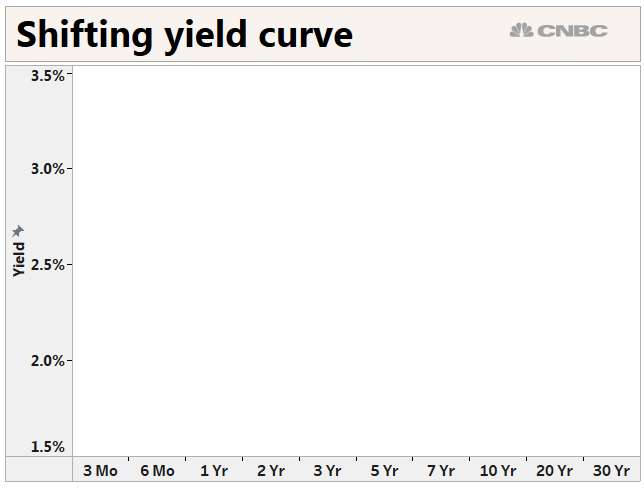
I think we're in recession right now, folks. And I think it's going to be a humdinger. If you are in the stock market, I advise you to re-evaluate, re-apportion and maybe even just flat-out sell.
- Decomposed, March 8, 2019
March 22, 2019
The bond market is flashing its biggest recession sign since before the financial crisis
by Jeff Cox
CNBC.com
KEY POINTS:
⢠The spread between 3-month and 10-year Treasury notes has fallen below 10 basis points for the first time since 2007.
⢠An inverted yield curve, where short-term yields are higher than their longer-term counterparts, is considered a reliable recession signal.
⢠The Federal Reserve this week said the U.S. economy is still strong but is facing challenges from global weakness.

Federal Reserve Chairman Jerome Powellâs assertion this week that the U.S. economy remains strong is facing a stern test from the bond market, which showed a classic recession sign Friday morning.
Short-term government fixed income yields are now ahead of the longer part of the curve, delivering a strong recession indication that hasnât happened since 2007.
The spread, or yield curve, between the 3-month and 10-year Treasury notes just broke the longest streak ever of being above 10 basis points, or 0.1 percentage point. The two maturities were last below that level in September 2007, a run of 3,009 trading days, according to Bespoke Investment Group.
The two maturities inverted Friday morning, a near-perfect sign that a recession is coming. An inverted yield curve does not mean a recession is imminent but that one is likely over the next year or so.
The three-month note yielded 2.468 percent around 10 am, while the benchmark 10-year was around 2.44 percent.
Economists see the yield move as a dark signal for an economy coming off its best year since the recovery began in mid-2009.
âYield curves are responding to what they see, to what I believe is a global economic slowdown,â said Peter Boockvar, chief investment officer at Bleakley Advisory Group. âYou donât see this kind of move in curves, not just here but everywhere, unless you get one.â
Short-term yields moving ahead of their longer-duration counterparts is seen as a sign that growth will be higher now than it will be in the future. New York Fed research considered by many to be seminal on the spread between yields found that the most-telling relationship was between the 3-month and 10-year notes, though many market participants still watch the spread between the two- and 10-year notes, which was about 10 basis points Friday morning.
The Federal Open Market Committee, which sets monetary policy for the Fed, said Wednesday that it wonât be raising rates anytime soon â likely for at least the rest of the year â unless economic conditions change.
Powell said the U.S. economy is âin a good placeâ though it is facing pressure from slowdowns in Europe and China. He and his colleagues collectively lowered their expectations for GDP growth domestically, now seeing just a 2.1 percent gain in GDP for all of 2019 and 1.9 percent in 2020.
http://www.cnbc.com/2019/03/21/a-key-recession-indicator-just-did-something-that-hasnt-happened-in-12-years.html

Gold is $1,581/oz today. When it hits $2,000, it will be up 26.5%. Let's see how long that takes. - De 3/11/2013 - ANSWER: 7 Years, 5 Months
